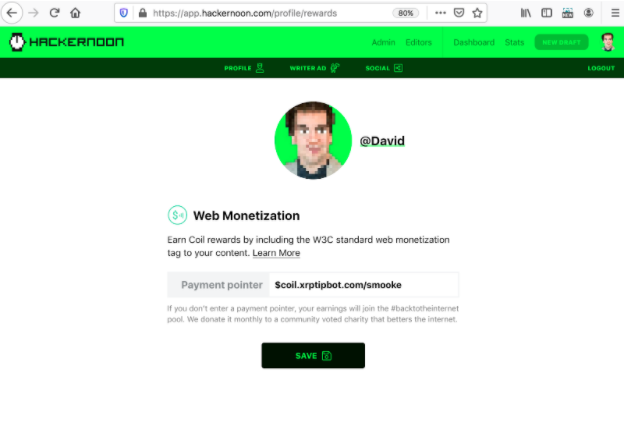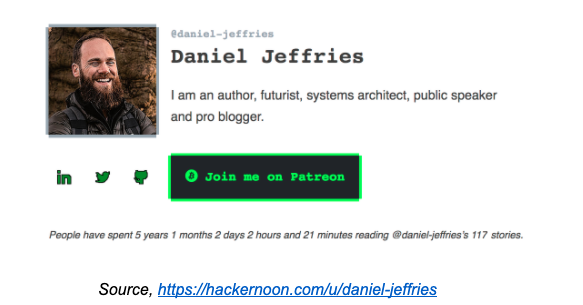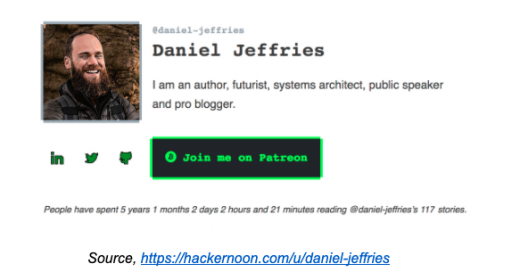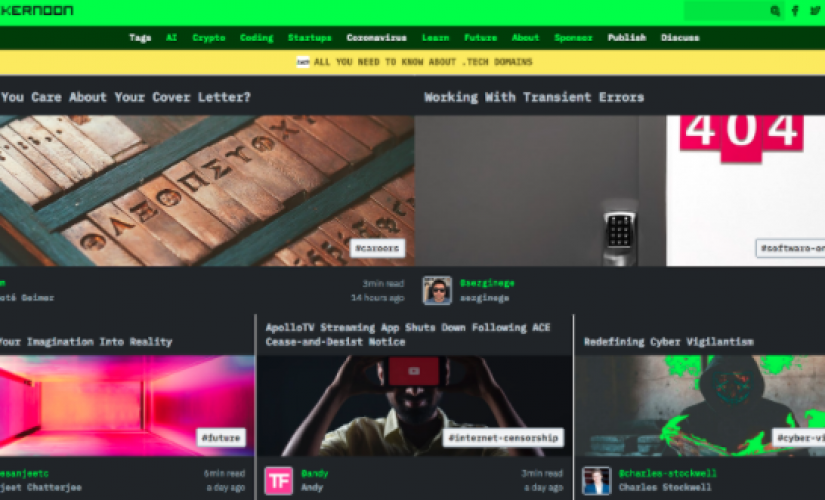Hacker Noon Adds Quantitative Social Proof and Web Monetization Standards
Hacker Noon Adds Quantitative Social Proof and Web Monetization Standards
Less than a year ago, Hacker Noon replaced Medium’s software with its own content management system. Since then they’ve created over 100+ years of reading time, and historically have published over 12k+ writers, according to the company’s about page.
I caught up with Hacker Noon’s Founder & CEO David Smooke to discuss the publishing platform’s growth over the last year, the company’s recent funding announcement, and where the future of digital publishing could be headed.
Streaming Micropayments in the Browser
Coil was founded in 2018, uses a proposed open web standard called Web Monetization to stream micropayments to creators in real time. Coil has been making other strategic investments in community content destinations, like Imgur.
“With this partnership, Hacker Noon writers can now add their Web Monetization meta tag to their stories, and we’ll experiment with streaming micropayments to writers based on how much time Coil users spend reading their stories,” said Smooke.
Will automatically streaming payments via the browser actually work?
“As the ecosystem is young and innovation requires experimentation, these payments will start small,” said Smooke. “But from the beginning, the browser was designed to power the exchange of monetary value. The HTTP status code ‘402 Payment Required’ is a nonstandard client error status response code that has been reserved for future use. Maybe that future is sooner than we think? Additionally, we’ll offer a way for writers to donate their earnings to charities that are dedicated to making the Internet a better place.”
On the Hacker Noon platform, here’s what it looks like for contributing writers to add their Coil Web Monetization Tag:

A Total Frontend Overhaul on Hacker Noon
On April 20th, Hacker Noon announced that they had switched their primary reader experience from static pages to the open source NextJS framework.
“It allows us to deploy changes at Hacker Noon without having to re-render every post and to publicly cache pages,” said Smooke. “So between deployments, if one user visits a new story that hasn’t been pre-rendered, it gets rendered, hydrated, and then stored for future visitors.”
With this frontend re-architecture, the Hacker Noon product team made major improvements to all of its public facing pages. Writers can now add their call to action not only to their profile page but also on the story pages themselves, driving more traffic to an external source. And readers, who are not required to log in since the launch of the new site, have a generally better and less distracting reading experience with wider images, better typography, and even a dark mode.
“We still have a long way to create the best reading experience we can,” said Smooke. “Currently, we rely on Algolia integration to allow for a clean pathway to content discovery, that includes filters by tag among other things. With the next iterations, we want to optimize for reader-centric features such as subscriptions by tags and authors, annotations and emoji reactions, and overall more meaningful engagement to each piece of content.”
Quantitative Social Proof
Platforms are under siege: how should they frame contextual information to the users’ content? And when should they step in to actually take down the content? Instagram has addressed this by removing like counts, and Twitter – in a more explosive manner – has started fact-checking the President’s tweets.
Hacker Noon has made their own move to provide quantitative social proof. The publishing platform has started to surface “time reading created” on contributing writers public profiles:

“A platform has a responsibility to frame how others interact with the content,” said Smooke. “The simplest measure of engagement is time. As we are a place to read, it makes sense for us to provide our readers with quantitative measurements, such as reading time created.”
Smooke confirmed that writers only ‘earn’ this feature when they exceed one day of reading created, and writers can turn on or off this data on their profile page via their settings page.
The Future of Publishing
Hacker Noon exists in an interesting overlap between traditional columns and opinions (think Forbes, WSJ, and NYT) and social platforms (like Twitter or Reddit). Many publishers are trying to become more like social networks, and many social networks successfully capture publisher revenue. Hacker Noon has never charged its readers but also is not focused on paying writers, until the introduction of the Web Monetization tag. But even now, it’s a third party, Coil, that is paying the writers.
What does Smooke think the role and responsibilities of platforms like Hacker Noon with its contributors?
“We have never been, and will never claim to be, the Jesus of publishing. Our writers are responsible for their own content. We provide another set of eyeballs to help improve the quality and distribution of the story. We call it the second human rule. And we will continue to provide more rewards and opportunities for publishing on Hacker Noon. We are not the arbiters of truth. What we can do right now, is amplify the voice of technologists who have deep expertise in their domains. We have a good business and well on our way to making a better business. In my humble opinion, Hacker Noon’s highest ceiling remains the creation of the time reading token.”
Seems lofty.
In the short term, Hacker Noon has raised money, and will expand software, sales, and editorial resources. I’ll be following where this goes…
The post Hacker Noon Adds Quantitative Social Proof and Web Monetization Standards appeared first on ReadWrite.
(29)



